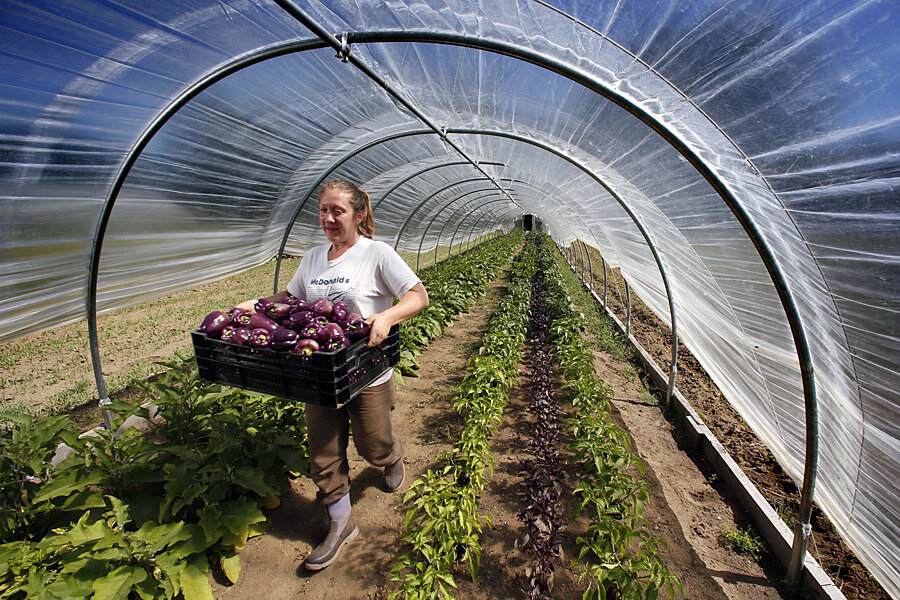Arctic greenhouse provides locals fresh produce year-round
Loading...
A greenhouse based in the northern Canadian community of Kuujjuaq, Nunavik is providing fresh local produce for residents of the Arctic region for the first time. Members of this community have had little opportunity to include produce in their diet due to arctic conditions unsuitable for agriculture and high food prices. Many of them have expressed their frustration with high food prices in protests and demonstrations.
Processed food comprises more than 84 percent of the average diet of individuals in Nunavik. At present, the demands of a growing population make the existing traditional food system in the region unable to adequately feed the community. The greenhouse will help improve local food security by extending the growing season past the summer months.
"In Northern Quebec, we are not linked to the road network—that means all of our fresh produce has to be flown in air freight," says Jason Aitchison, General Manager ofKuujjuamiut Inc., an organization assisting with the project's hydroponic gardens. "This has serious cost implications even with government transportation subsidies. For the communities north of Kuujjuaq up along the Ungava coastline, the cost implications are even greater and the quality of the fresh produce deteriorates the further north you go."
The project originated with a greenhouse that was built by Laval University on the outskirts of Kuujjuaq in the 1990s for research purposes. Presently, the greenhouse is managed by the municipality and a group of volunteers. Community members are welcome to use any of the greenhouse’s 21 garden plots to grow crops during the summer. Some of the produce that has come out of the garden includes peppers, beans, tomatoes, carrots, and herbs.
The project was funded entirely by the Kativik Regional Government’s Department of Research and Economic Development. At present, the project coordinators are focused on establishing the greenhouse project as a community-based nonprofit, much like the Inuvik Community Greenhouse in the Northwest Territories, since acquiring the funding and support necessary to establish the greenhouse as a self-sustaining enterprise continues to be a challenge. However, the greenhouse may receive financial support in the future fromPlan Nord, a Quebecois economic development strategy that will, among other objectives, support producers and sellers of locally-grown foods and the creation of a bio-food research network.
"Weather is also a major challenge for the coastal communities to fly in and out of, as is the climate when, for example, you're loading or offloading goods in -40 Celcius temperatures plus wind chill," says Aitchison. "You can imagine no matter how well packed your tomatoes or lettuce may be, they will no longer be farm fresh—that's for sure."
The project coordinators are also looking for more space to expand the project and to involve more of the community such as the Inuit, whose food systems have not traditionally included agriculture. Planners from this area hope that the development of greenhouses will catalyze a local food initiative that will help local communities feed and employ themselves. Aitchison says that they intend to distribute the produce from the greenhouses to local senior homes and to the underserved.
The greenhouse project has inspired a number of other complementary projects that will support the residents of Kuujjuaq in their efforts to make agriculture more central to their lives and the development of their community. One of the projects includes a composting program, which has redirected organic waste generated by local stores from the landfill by converting it into fertilizer for the greenhouse gardens. Other projects involve a youth agriculture program and a horticultural therapy program that will serve mental health patients at a supervised living residence.
The greenhouse managers are currently conducting test crops that include strawberries and cauliflower to select for the most optimal varieties. They are also considering the use of LED lights to meet the project's electrical needs.
The United Nations declared 2014 the International Year of Family Farming (IYFF) to highlight the importance of family and smallholder farmers. Food Tank is partnering with the U.N. Food and Agriculture Organization (FAO) to commemorate IYFF, and will feature weekly posts and other media highlighting the innovations that family farmers are using to alleviate hunger, poverty, and environmental degradation along with the campaigns and policies that support them.







